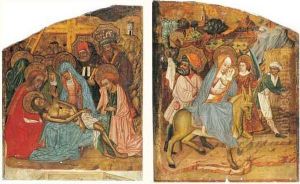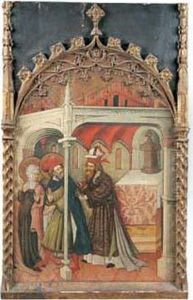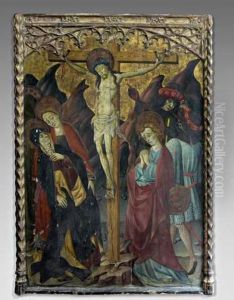Blasco De Granen Paintings
Blasco de Grañén was a Gothic painter active during the early Renaissance period, predominantly in the region of Aragon, Spain. While the exact dates of his birth and death are not precisely known, historical records suggest that he was born around 1421 and died around 1459. His work is characterized by a transition from the International Gothic style to a more naturalistic approach influenced by the Renaissance movement that was burgeoning in Italy.
De Grañén's contributions to the art world are especially noteworthy in the context of the Aragonese painting school of the 15th century. He is often credited with introducing new Italianate elements into the local artistic vocabulary, which he blended with the Gothic tradition. This synthesis of styles is evident in the use of perspective, a greater sense of volume in figures, and a more realistic approach to human expressions and gestures in his paintings.
The artist's most significant works are found in the form of altarpieces. He received numerous commissions from religious institutions, which indicates his recognition and prominence during his lifetime. Among his major works are the altarpiece for the Chapel of San Miguel in the Cathedral of Tarazona and the altarpiece of the Church of Saint Martin in Huesca. These works showcase his ability to create complex compositions and his skillful handling of color and light.
Blasco de Grañén's legacy is also marked by his role as a teacher and the influence he had on other artists of the period. He had a workshop that was one of the most prolific in Aragon, and it is known that he had several disciples who carried on his artistic tradition. Although not as widely recognized today as some of his contemporaries, de Grañén played a pivotal role in the development of the Aragonese school of painting and in the broader narrative of the Spanish Renaissance art.


